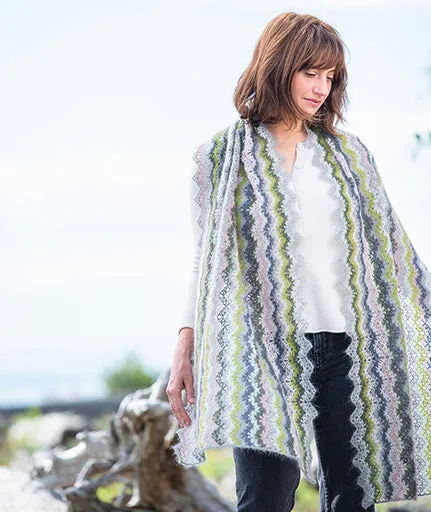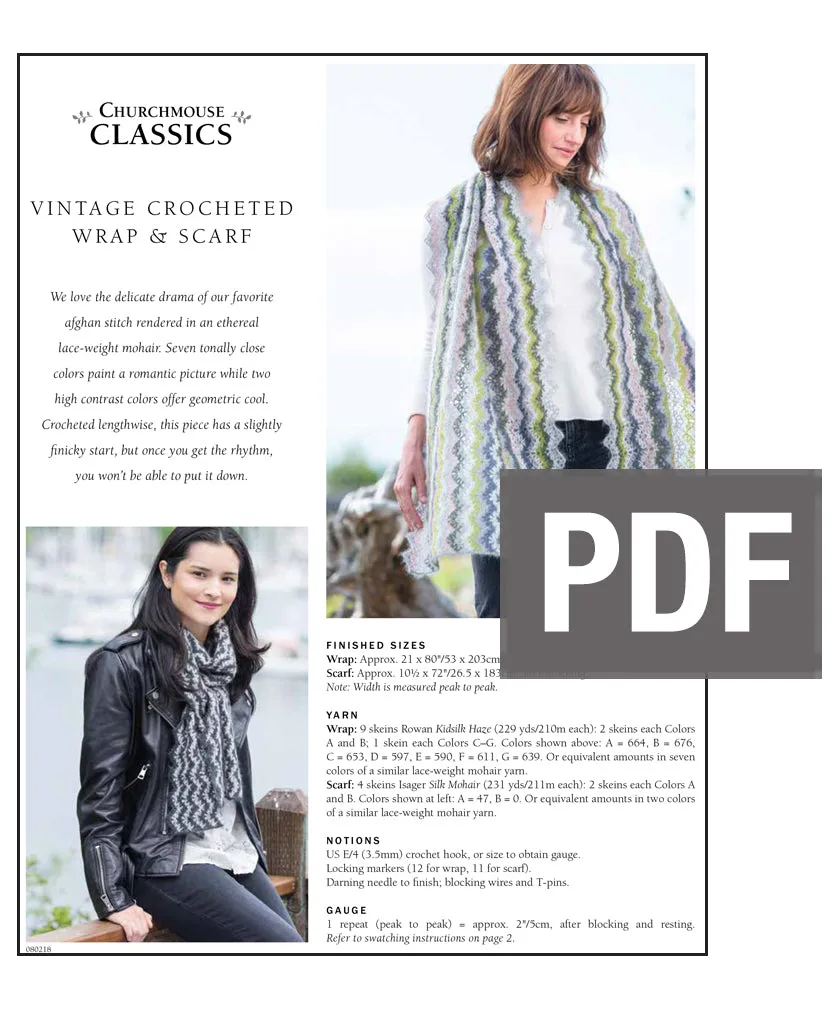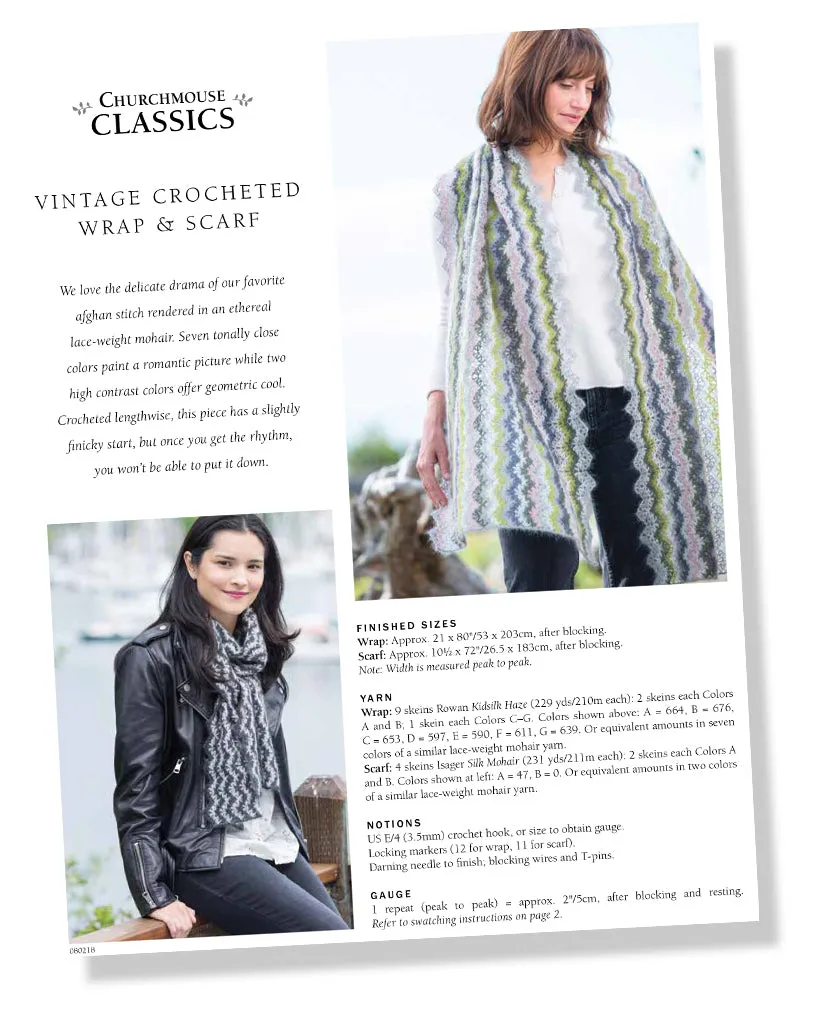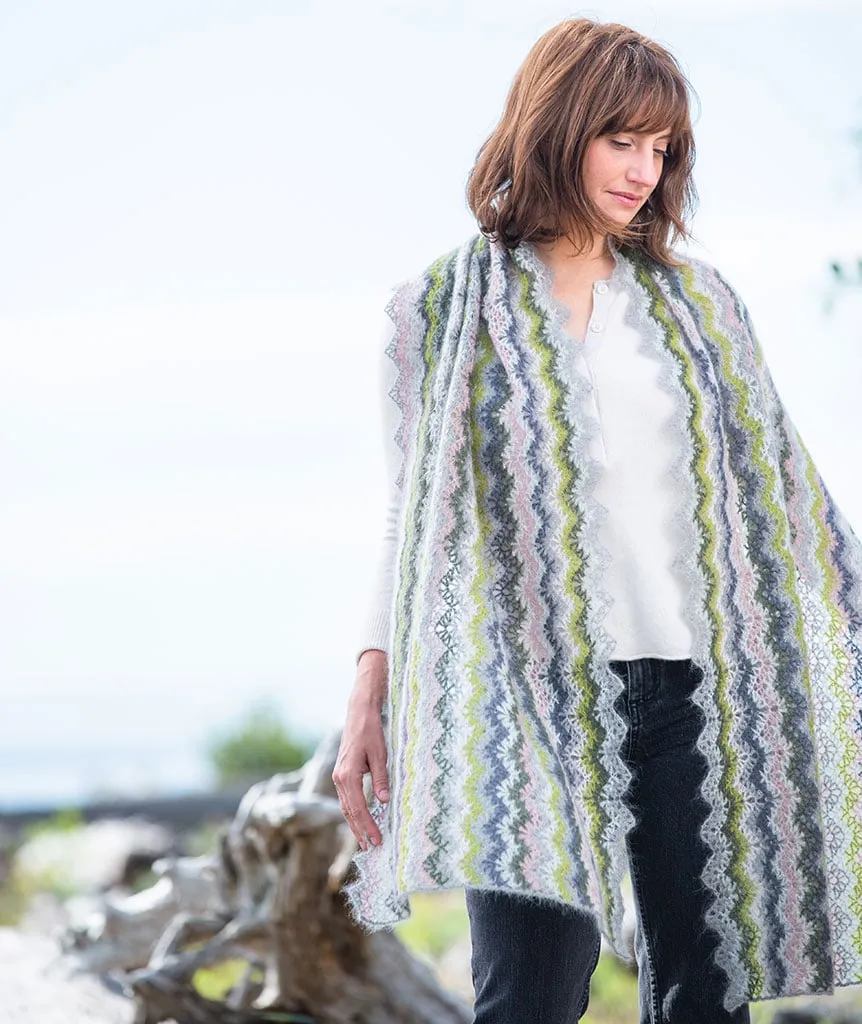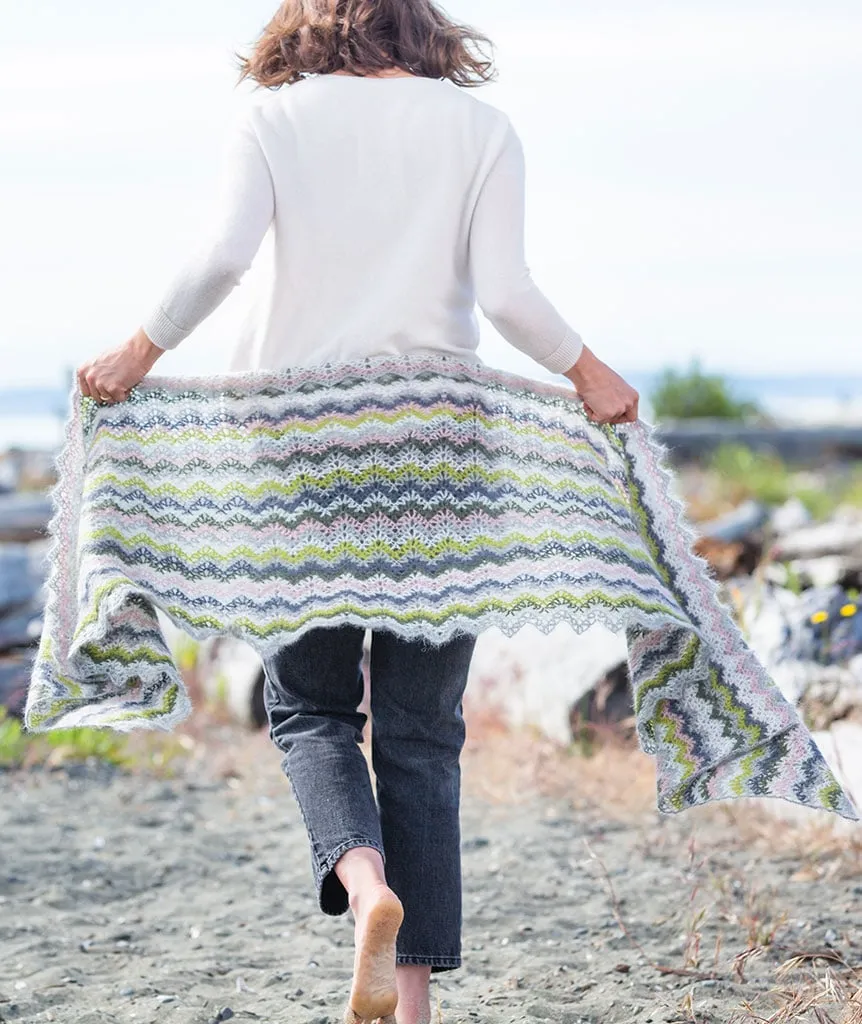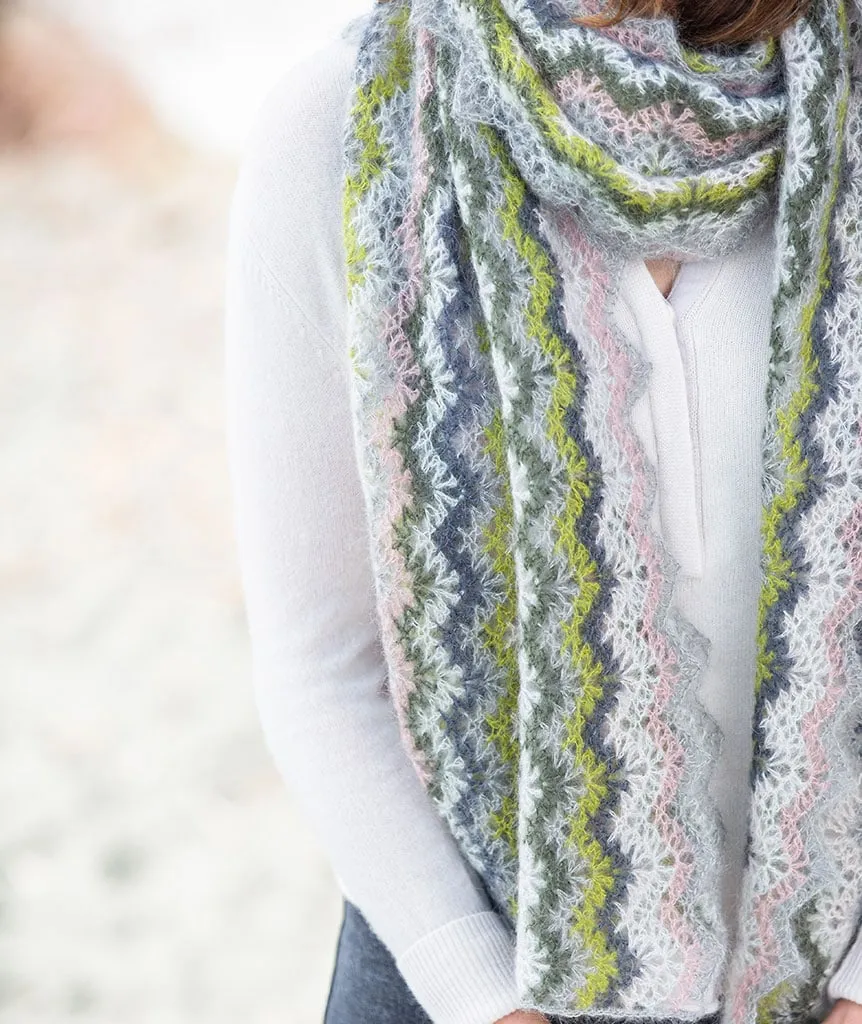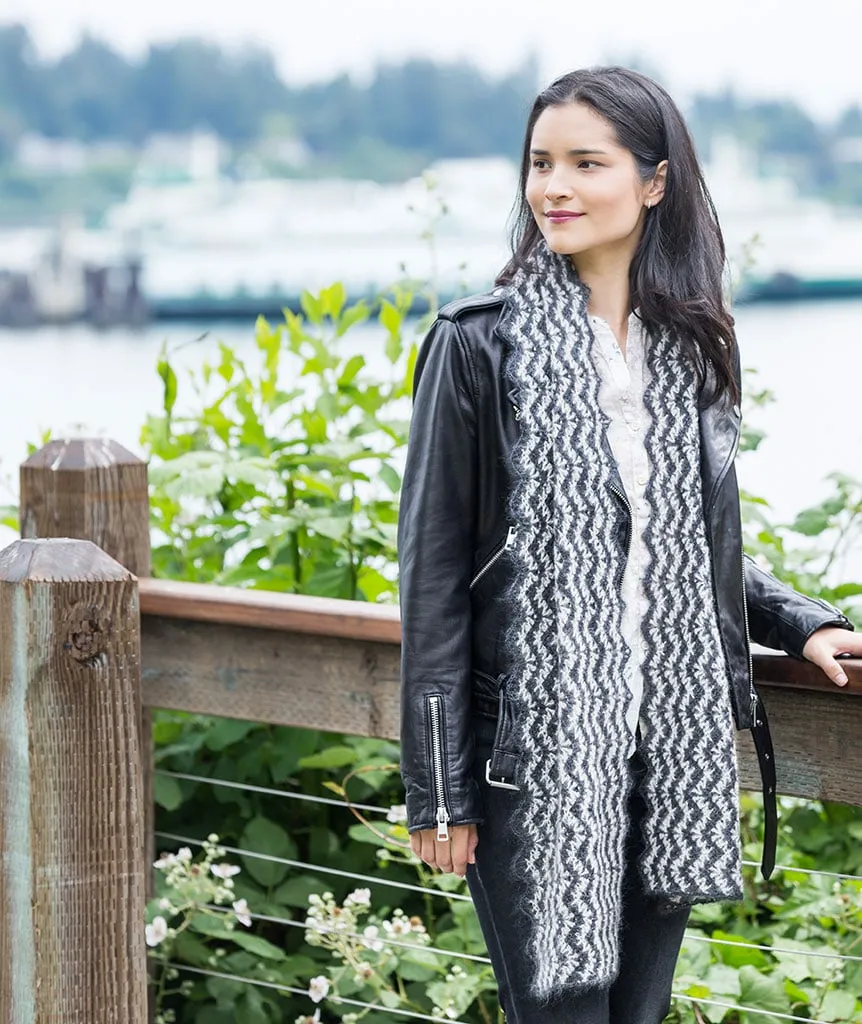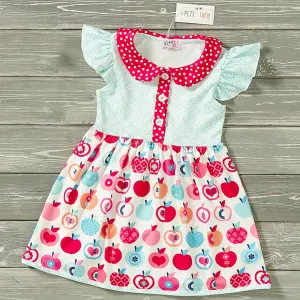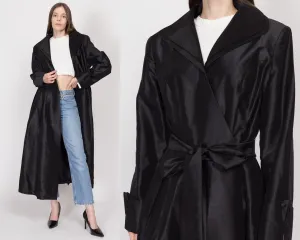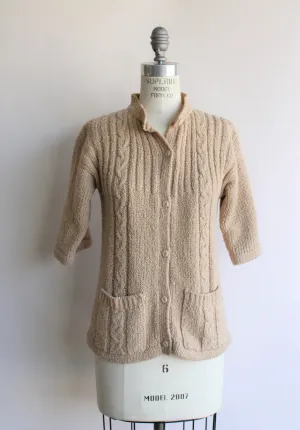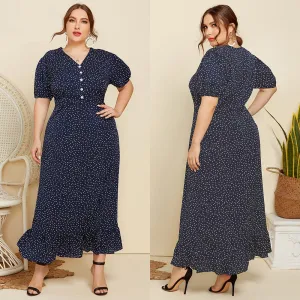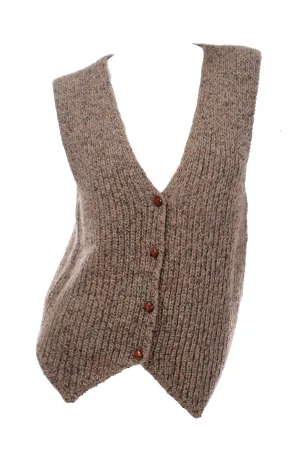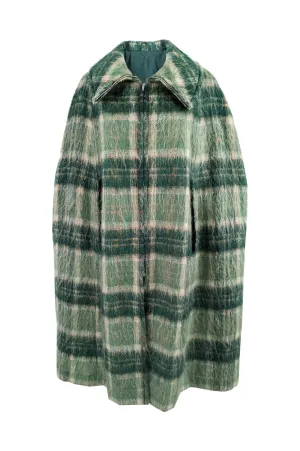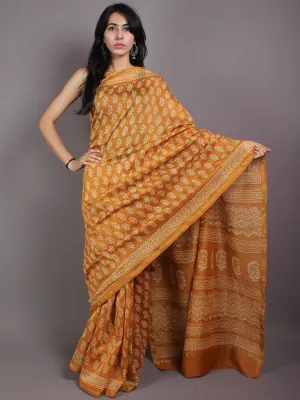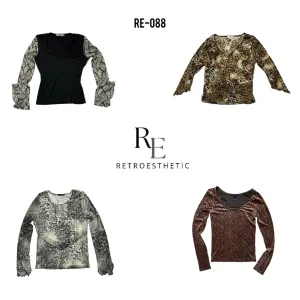The Design
“Romantic, dramatic.”
We love the delicate drama of our favorite afghan stitch rendered in an ethereal lace-weight mohair. Seven tonally close colors paint a romantic picture while two high-contrast colors offer geometric cool. Crocheted lengthwise, this piece has a slightly finicky start, but once you get the rhythm, you won’t be able to put it down!
We chose two airy mohair/silk blends (Rowan and Isager ) to create the frothy, lace-like Wrap & Scarf!
This 4-page pattern includes:
- Color photography by the talented Jared Flood.
- Easy-to-read crochet chart and key.
- Brief guide on swatching in crochet.
- Instructions on how to finish and block your piece.
The Details
FINISHED SIZES
Wrap: Approx. 21 x 80"/53 x 203cm, after blocking.
Scarf: Approx. 10½ x 72"/26.5 x 183cm, after blocking.
Note: Width is measured peak to peak.
YARN
Wrap: 9 skeins (229 yds/210m each): 2 skeins each Colors A and B; 1 skein each Colors C–G. Colors shown above: A = 664, B = 676, C = 653, D = 597, E = 590, F = 611, G = 639. Or equivalent amounts in seven colors of a similar lace-weight mohair yarn.
Scarf: 4 skeins (231 yds/211m each): 2 skeins each Colors A and B. Colors shown at left: A = 47, B = 0. Or equivalent amounts in two colors of a similar lace-weight mohair yarn.
NEEDLES & NOTIONS
US E/4 (3.5mm) crochet hook, or size to obtain gauge.
Locking markers (12 for wrap, 11 for scarf).
Darning needle to finish; blocking wires and T-pins.
GAUGE
1 repeat (peak to peak) = approx. 2"/5cm, after blocking and resting.
Refer to swatching instructions on page 2.
KNITTER'S NOTES
This project may look daunting and the foundation row can be finicky, but we’ve added a chart to help you along the way. Take time to swatch so you can practice and get into the rhythm of the zigs and zags.
After working a few repeats, take a moment to look back and make sure your stitches match the chart. Checking every few repeats will save you from having to pull out a full row! Our test crocheters also found it was helpful to mark decreases every few repeats, so they were sure to keep them aligned as work progressed.




